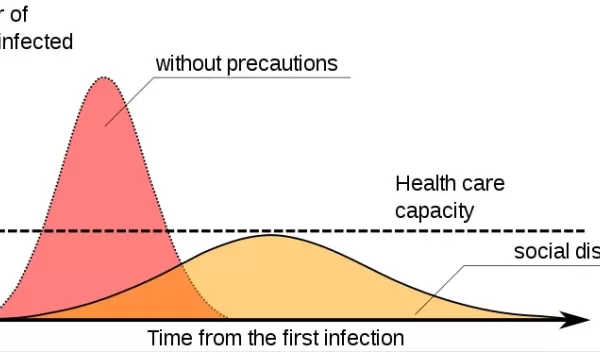
Social distancing only the first step toward stopping coronavirus
After days of closed schools and businesses and stay-at-home efforts, many people caught in the COVID-19 pandemic are wondering if these efforts will be enough.
The answer depends on how local, regional, and federal governments use this time, says Alessandro Vespignani, director of the Network Science Institute at Northeastern University. It also depends on how well people heed the warning to maintain physical distance from others and avoid unnecessary social interactions, he says. In a National Science Foundation-supported project, U.S. and international networks of scientists are developing new methods and models to address these societal challenges.
"We need social distancing for a longer time to slow down the disease, and then we need to use that time to increase capacity in the hospitals, to increase capacity in testing," says Vespignani, the project's principal investigator.
Vespignani has been working with a team of researchers at Northeastern and around the globe to understand how the virus has been spreading, and to predict how it will continue to spread. One early conclusion: There is not a quick fix (or a quick ending), even if stemming social interactions slows the first wave of the outbreak.
"All the models that have been circulated are saying the same thing: This epidemic is likely to resurge," Vespignani says. "It's not as if we do weeks of social distancing, and then the story's over."
The United States needs to be ready to head off a resurgence of cases when people begin to resume something resembling their normal lives, Vespignani says. That means having teams in place that are able to trace the contacts of infected persons; having the capacity to isolate people as soon as they show any symptoms; and creating the infrastructure to do tens of thousands of tests every day -- efforts that paid off in countries such as China, where the spread of the disease has leveled off, and South Korea, where a major outbreak seems to have been averted.
"That's why lifting bans too early, even in places where you don't see a large number of cases, might be dangerous, because this thing is going to resurge," Vespignani says. "We should start thinking about how to repurpose industries and places and build labs to do testing. There is no other way."


